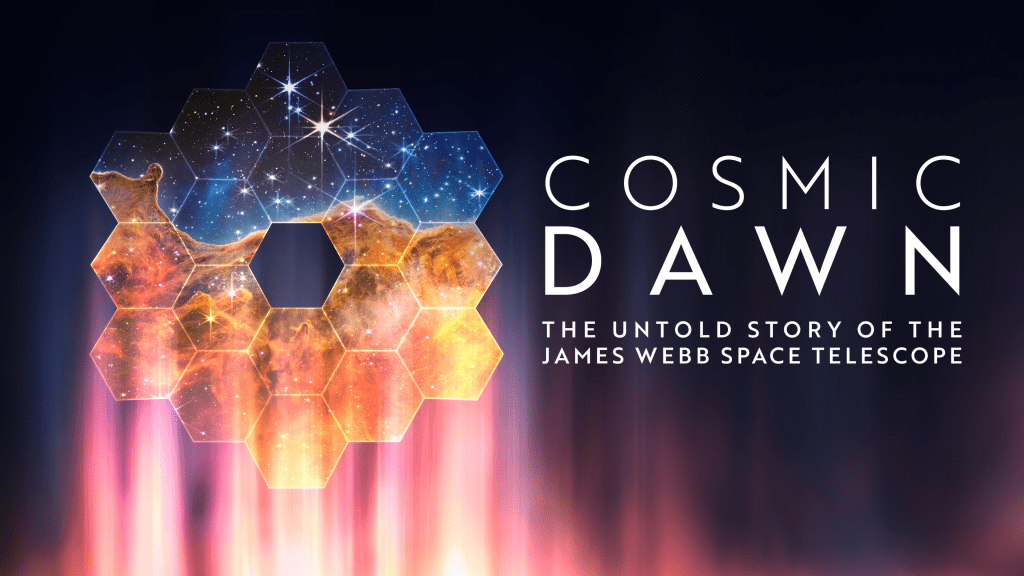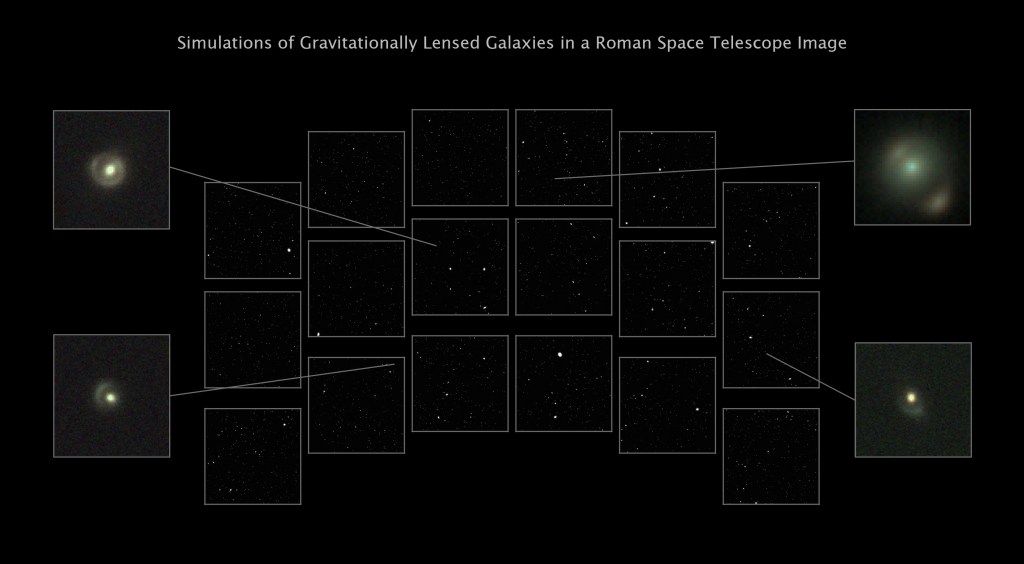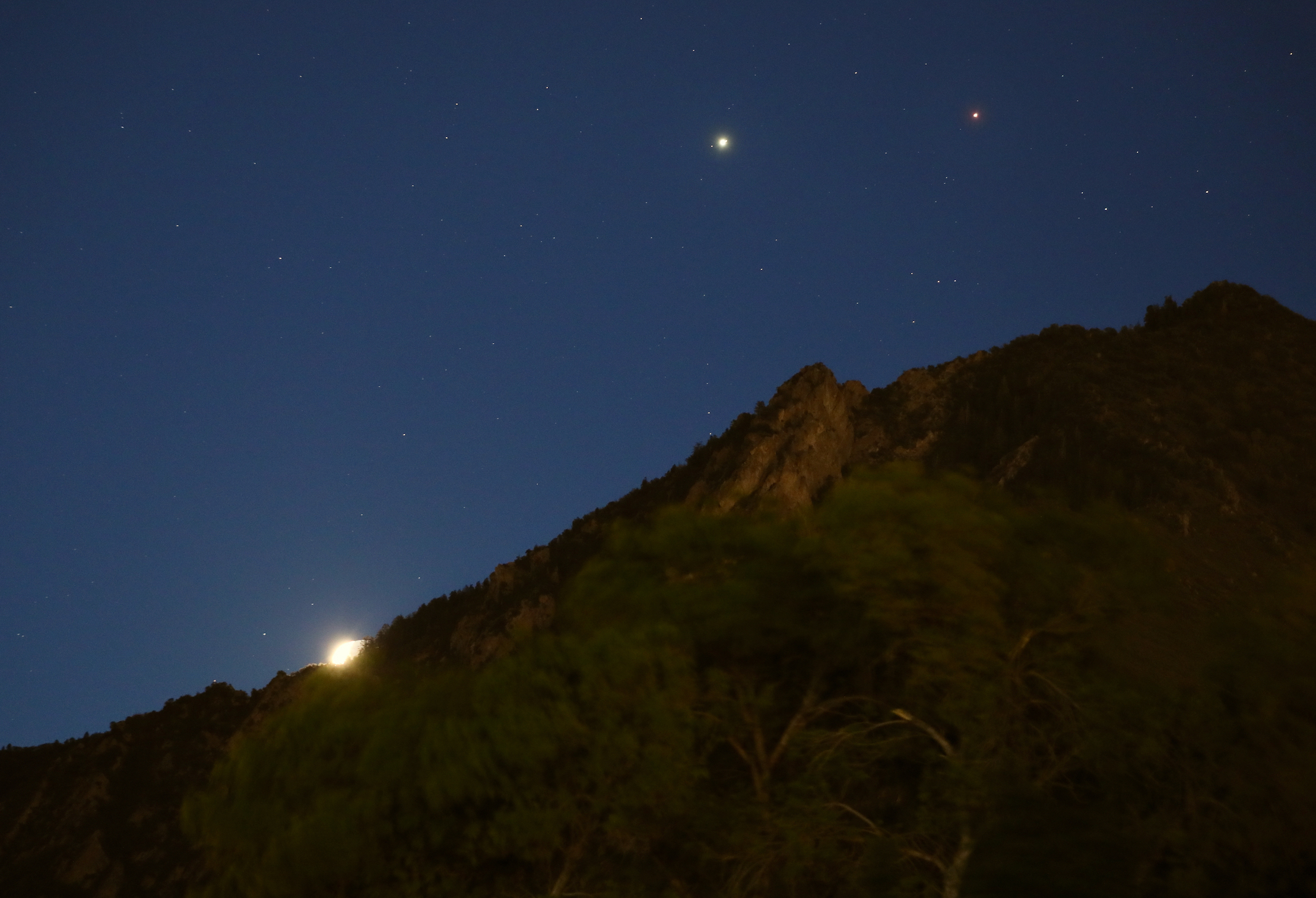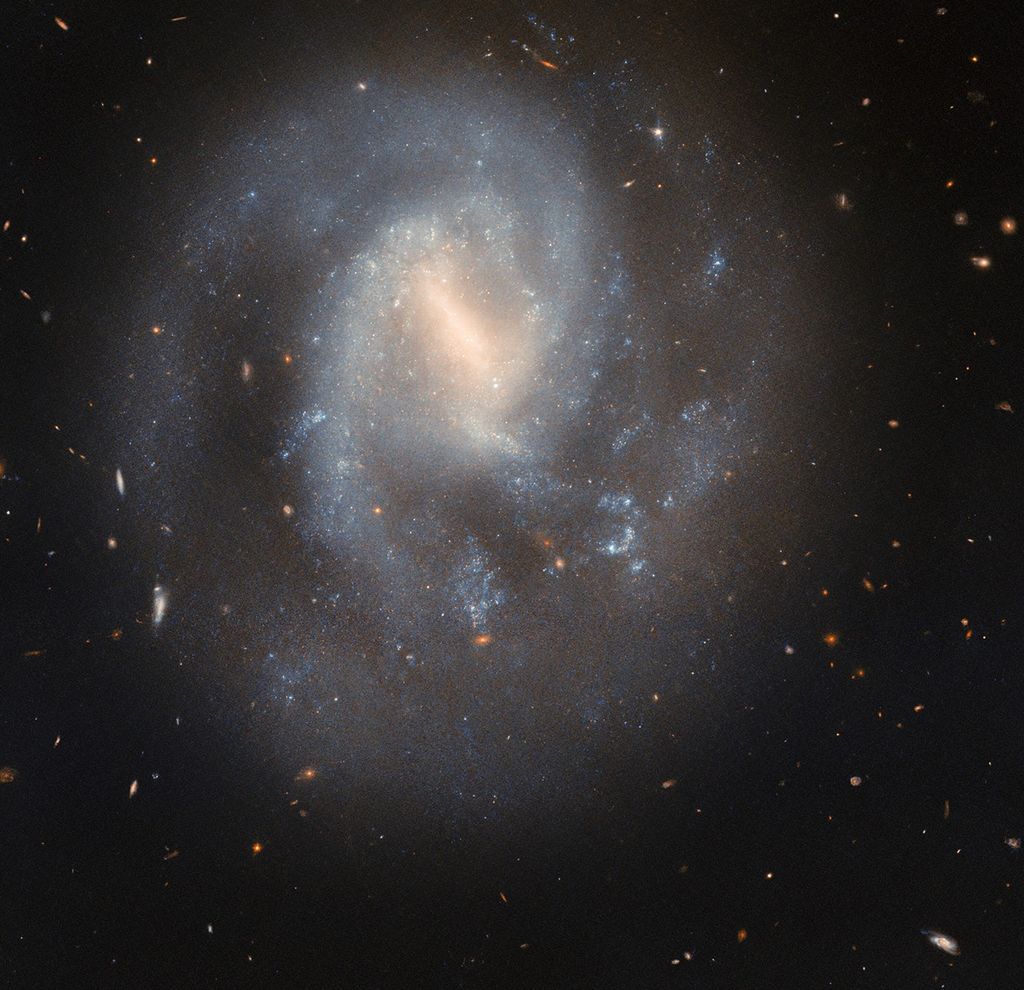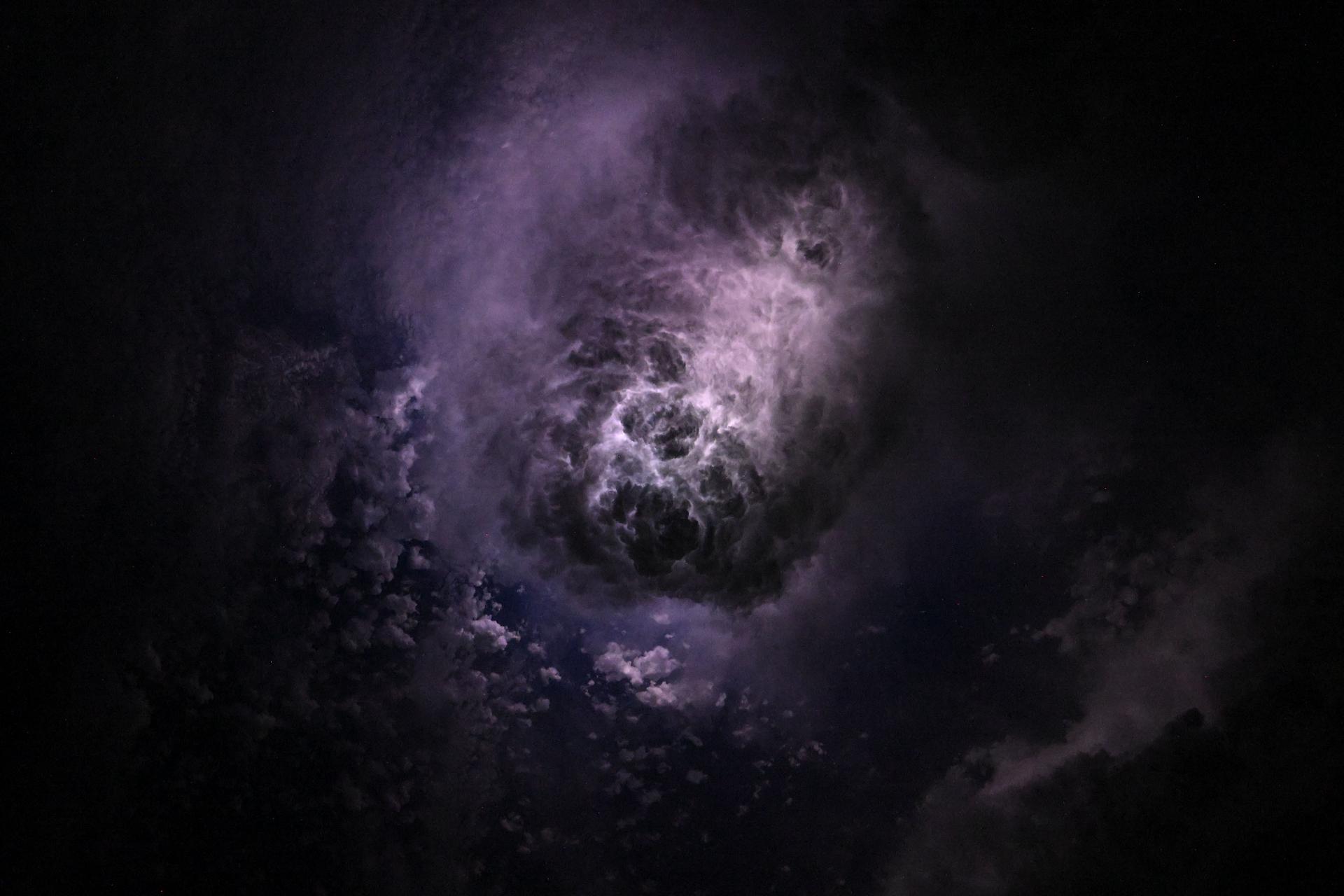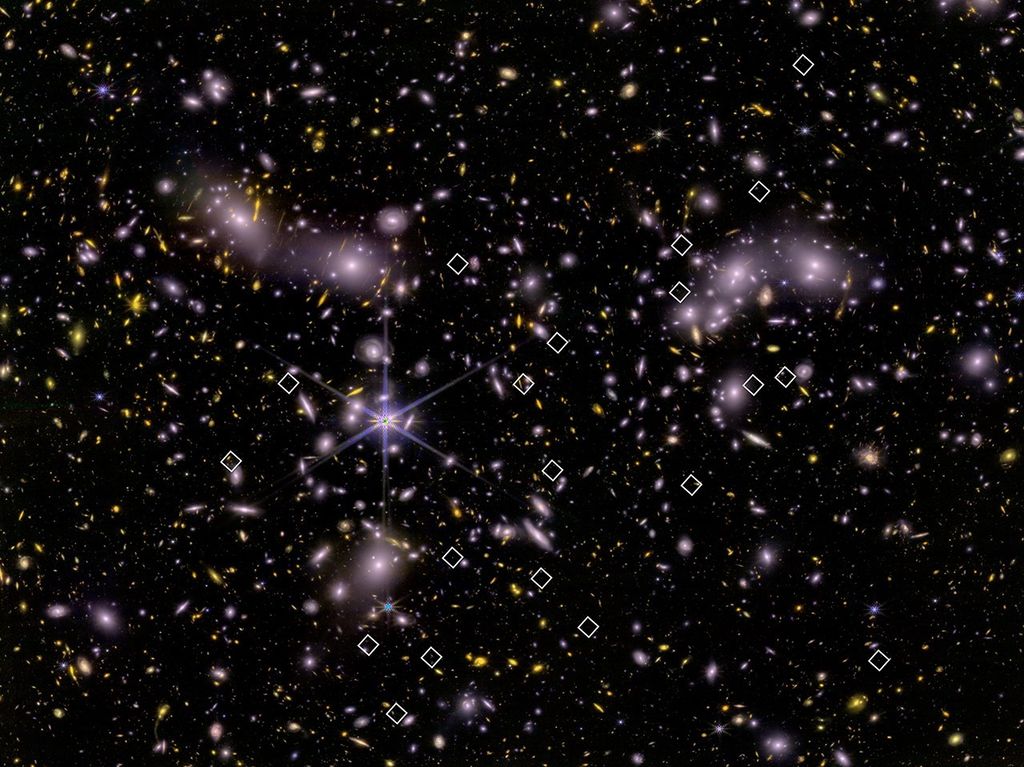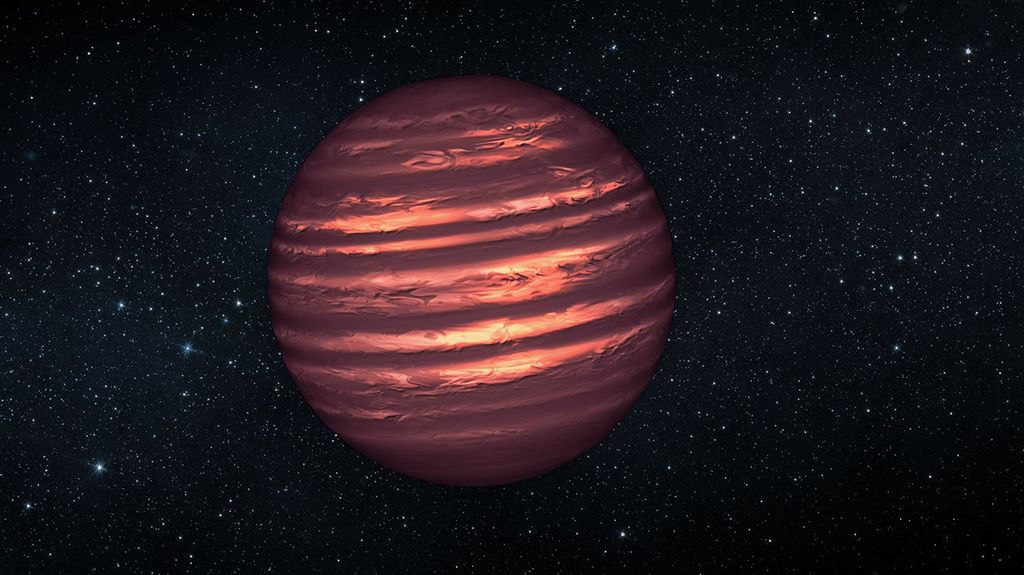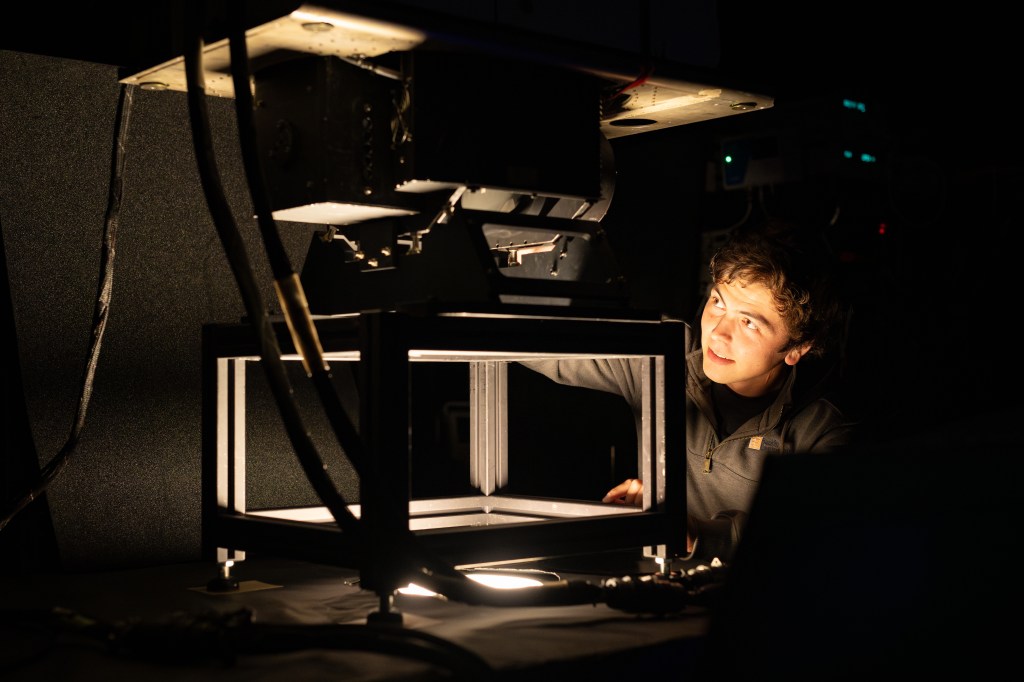1 min read
Hubble Discovers Powerful Laser Beamed from Chaotic Star
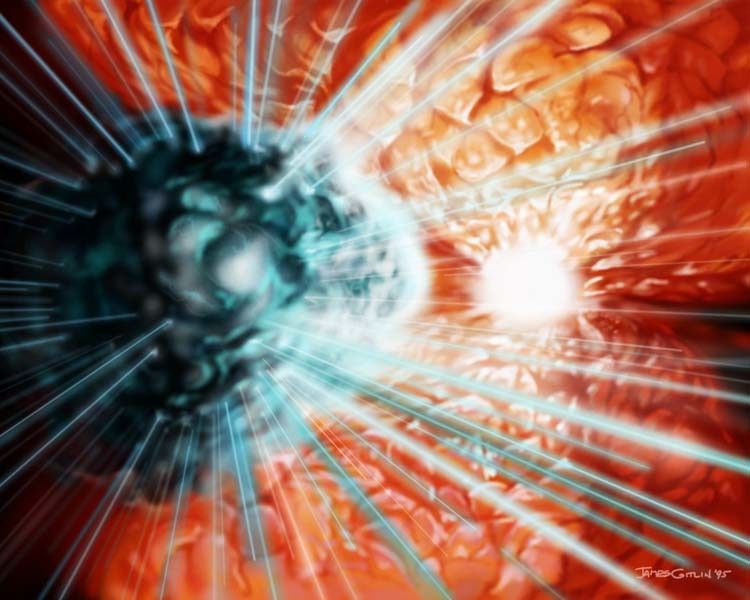
This is an artist's concept of a gas cloud (left) that acts as a natural ultraviolet laser, near the huge, unstable star Eta Carinae (right) - one of most massive and energetic stars in our Milky Way Galaxy.
The super-laser was identified by a team led by Kris Davidson of the University of Minnesota, and including nine other collaborators in the U.S. and Sweden during spectroscpic observations made with the Goddard High Resolution spectrograph aboard NASA's Hubble Space Telescope.
Since it's unlikely that a single beam from the cloud would happen to be precisely aimed in earth's driection, the astronomers conclude that numerous beams must be radiating from the cloud in all directions - beams from a dance hall mirror-ball. The interstellar laser may result from Eta Carinae's violently chaotic eruptions, illustrated here as a reddish (due to light scattering by dust) outflow from the bright star.
A laser, (an acronym for Light Amplification by Stimulated Emission of Radiation) creates an intense coherent beam of light when atoms or molecules in a gas, liquid or solid medium, force an incoming mix of wavelengths (or colors) of light to work in phase, or, at the same wavelength. Though a natural infrared laser was identified in space in 1995, lasers are very rare in space and nothing like the UV laser has ever been seen before.
Eta Carinae is several million times brighter than the Sun, and one hundred times as massive. The superstar, located 8,000 light-years away in the souther constellation Carina, underwent a colossal outburst 150 years ago.
About the Object
- R.A. PositionR.A. PositionRight ascension – analogous to longitude – is one component of an object's position.10h 45m 3.59s
- Dec. PositionDec. PositionDeclination – analogous to latitude – is one component of an object's position.-59° 41' 4.26"
- Object NameObject NameA name or catalog number that astronomers use to identify an astronomical object.Eta Carinae
- Release DateJanuary 10, 1995
- Science ReleaseHubble Discovers Powerful Laser Beamed from Chaotic Star
- CreditIllustration courtesy: James Gitlin/STScI
Share
Details
Last Updated
Mar 28, 2025
Contact
Media
Claire Andreoli
NASA’s Goddard Space Flight Center
Greenbelt, Maryland
claire.andreoli@nasa.gov

